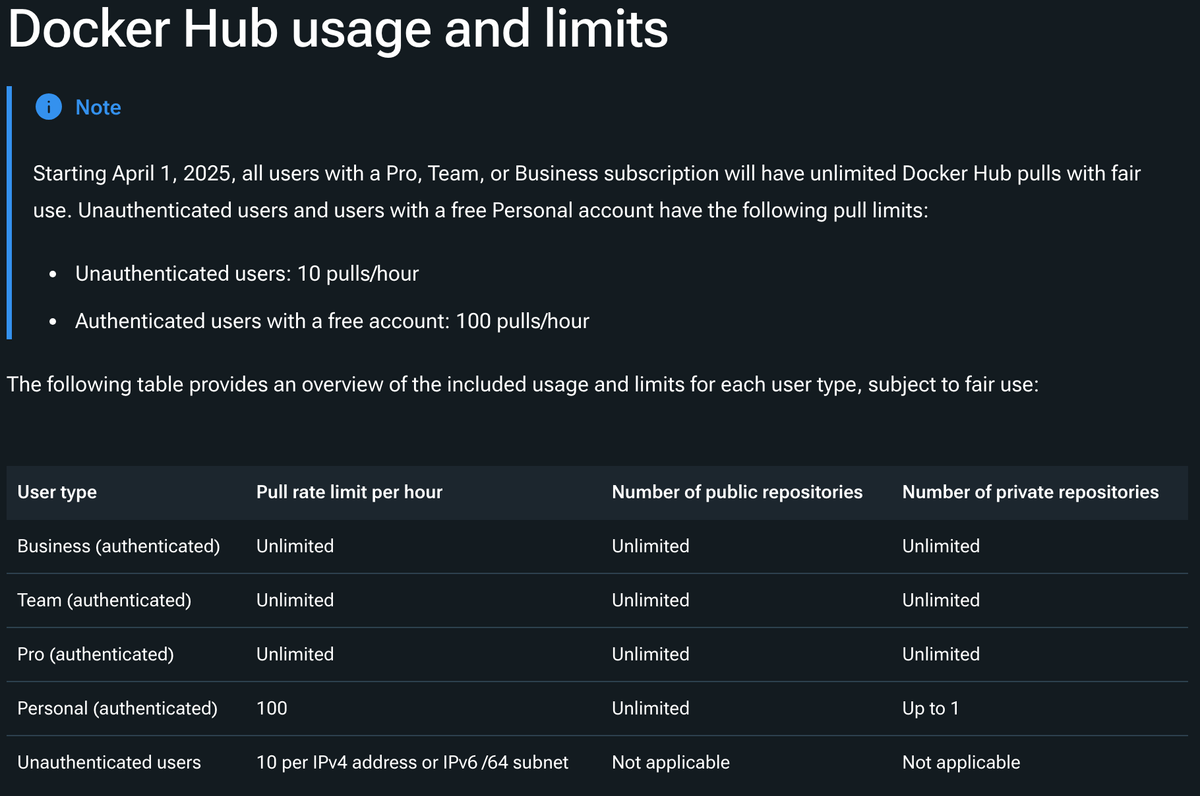Docker Hub Pull Limits are Changing—Here’s How LayerOps Protects You!

Starting April 1, 2025, Docker Hub will enforce new pull rate limits:
- Unauthenticated users: limited to 10 pulls/hour
- Free Personal account users: limited to 100 pulls/hour
- Pro, Team, or Business subscription: unlimited pulls with fair use.
For many teams relying heavily on Docker images in continuous integration (CI), deployment processes, or regular updates, these limits could pose serious disruptions.
But here's the good news: LayerOps has you covered!
How does LayerOps protect you from these limits?
At LayerOps, we built our solution to avoid exactly this kind of third-party limitation. Here’s how we do it:
✅ Use Your Own Private Docker Registry
Unlike many PaaS or CaaS solutions on the market, LayerOps doesn't force you to depend exclusively on public registries or only their. You have the complete freedom to integrate and deploy containers from your own private Docker registry.
This freedom provides you:
- Total control over your deployment pipeline.
- Protection against rate limits or third-party policy changes.
- Increased security by reducing dependency on public registries.
✅ Your Cloud Accounts, Your Infrastructure
Many platforms force you to share infrastructure and public IPs with other customers, which increases risks around rate-limiting and even IP blacklisting.
With LayerOps, you can deploy workloads using your own cloud accounts. That means your infrastructure, your IP addresses, and complete independence. No shared IP, no shared rate-limit headaches.
✅ Better IP Management for Public Registries
Even if you still prefer public registries, LayerOps significantly reduces your risk. For deployments on European cloud providers (such as OVHcloud, Scaleway, Exoscale, Infomaniak, or Outscale), LayerOps uses the dedicated public IP address of each cloud instance you deploy, meaning your Docker pulls won't share a NAT gateway IP with others.
🚫 Note: Only GCP, AWS, and Azure force NAT usage, causing IP sharing. European cloud providers give you greater freedom.
✅ Instant Workload Portability
If you ever hit a Docker pull limit, LayerOps makes solving the issue effortless:
- Simply move your containerized workload to another provider or another region with a few clicks.
- No downtime, no complex configuration, no headaches!
This portability ensures your business remains operational and responsive even in worst-case scenarios.
Why is Portability Still Underrated?
Honestly, given all these advantages, we wonder why more organizations don't prioritize portability and infrastructure independence. The recent Docker Hub policy changes illustrate perfectly why the freedom to deploy anywhere—without limitations—is not a luxury, but a strategic necessity.
With LayerOps, you gain more than just another multi-cloud CaaS solution—you gain the freedom to deploy, the freedom to choose, and the freedom to stay agile in the face of evolving third-party constraints.
👉 Discover true multi-cloud freedom with LayerOps: https://www.layerops.io
👉 Explore all supported providers: https://www.layerops.io/providers
👉 Check our latest platform improvements: https://www.layerops.io/changelog
#DockerHub #MultiCloud #HybridCloud #ContainerAsAService #CaaS #CloudFreedom #LayerOps #DockerLimits #DevOps #ContainerManagement